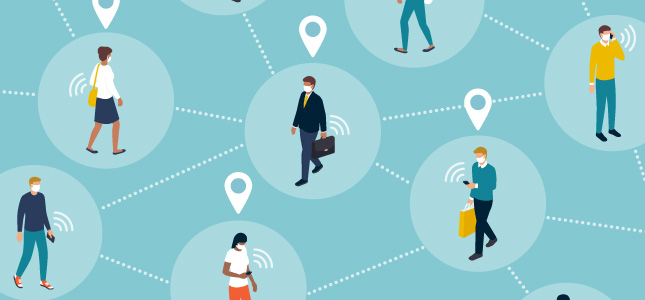The contact center industry has always needed to look forward. It’s a business so ingrained in the trends and innovations of every industry from healthcare, travel, banking, and more. But the Coronavirus pandemic forever changed our hopes for the future.
We understood that most industries were on the road to digitalization, but the crisis led to a tectonic shift in how people live. Social distancing and stay-at-home orders have affected every major city around the world and has influenced how customers interact with brands and what they expect from digital-first experiences.
An overwhelming at-home workforce and consumer base forced the contact center industry to enforce temporary innovations to handle surging volume and traffic. What we need to do now is understand what strategies deployed during crisis we can deploy for the new-normal:
1. Distributed contact center workforces
The crisis completely turned work on its head. Traditional industries with only a few centralized brick-and-mortar locations or those with limited remote capabilities were surprised by the speed with which business continuity plans had to be enacted. Organizations that fared better had a distributed global footprint already in place, so when the unexpected came, they had resources across the map and were ready to disperse.
Work-from-home proved to be a viable option for companies that had never considered it, as well, which also distributed the workforce out of physical centers.
The post-crisis the old distribution model may be forever changed into a hybrid of remote and brick-and-mortar work. De-centralized physical locations allow for maximum diversification in skills, resources, and locations. The flexibility of being able to deploy workers from anywhere creates a workforce that can be used to suit various volumes and support needs, depending on the situation.
2. Disaster-proof scalability and remote resources
Leaders will be more heavily prepared for the unexpected moving forward. Natural disasters and human factors will always be cause for unexpected volumes of support. The flexibility of service capabilities brought on by remote work will enable organizations to more readily deploy emergency staff in times of distress.
When future customer demand surges unexpectedly, businesses that can pivot and scale support capacity quickly will be invaluable. Additionally, organizations will need to invest in infrastructure and digitally driven training to have all the pieces in place in case the immediate need for contact center scale arises.
3. Digital-first business
Digital transformation tools were once seen as an investment that could be saved another time. Not anymore. Customer-facing organizations quickly woke up to the mission-critical benefits of digital tools when they had to deploy solutions quickly.
Automation, AI-enabled learning, messaging, and cloud-based systems are just some of the digitally driven CX enhancements that are here to last. In many cases, companies have already seen costs decrease while contact resolution, employee productivity, and customer satisfaction increase through a mix of people and technology to deliver great customer experiences.
4. Expanded CX self-service
Massive effort was needed to support the most urgent healthcare, financial services, travel, public sector, and questions when the pandemic hit. The shift of available human resources to the most pressing issues made self-service deflection a strategic imperative. Smart IVR, online FAQs, automated chatbots, and enhanced knowledgebases became critical call deflection solutions for non-emergency calls and common questions.
The push for self-service has enabled organizations to get more out of their service capacity with the same units of labor in this time of emergency. The advancements made here will be incredibly useful for providing customers with relevant information quickly without having to force everyone into the voice channel.
It’s also worth noting the investment made in CX knowledgebases will be critical down the road. Self-service is only as successful as the core knowledge assets and the units that use them. For example, augmented attended service are chatbots being deployed to ride along with agents to suggest relevant content and services to make their jobs easier.
5. Unconventional corporate security policies
People are not the only ones on the move. Desktops, laptops, and all the tools necessary to make a brick-and-mortar center run had to be taken home or shipped out. This opened a huge gap in security concerns. In addition, traditional in-person vetting such as drug testing proved to be incredibly challenging due to facilities being focused on much larger priorities.
As remote work becomes more common, security and policy factors need to be planned for. Security leaders will have to rethink what media can be allowed on agents’ computers, how to block USB storage, enforce hardware restrictions, and activate “dummy” machines when not connected to a secure network. Alternative monitoring through video programs such as Zoom will be also essential to assess an agent’s workplace, as well as provide valuable face-to-face contact.
Rework your contact center from the top
The best resilience strategy is to always plan forward. We need to collectively understand the challenges we all experienced and apply solutions. Digital transformation, remote workers, and physical space issues are all at our doorstep. It’s time to be proactive.










